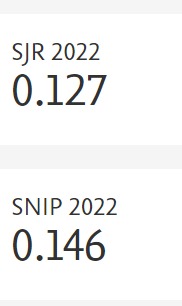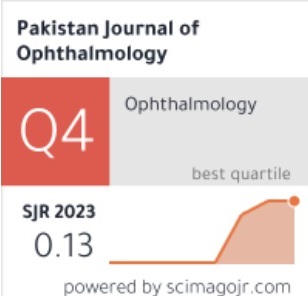A Pilot Study: Assessment of Therapeutic Effects 670 nm Photobiomodulation on Amblyopia
Doi: 10.36351/pjo.v38i3.1699
DOI:
https://doi.org/10.36351/pjo.v40i1.1699Abstract
Purpose: To evaluate positive effects of photobiomodulation in amblyopia treatment in patients with 8-13 year of age.
Study Design: interventional case series.
Place and Duration of Study: Shahid Beheshti University of Medical Sciences, Iran.
Methods: This study was conducted on 16 subjects with strabismic amblyopia. Subjects were assigned to two groups: Photobiomodulation (PBM) and control group. In the PBM group, patients used a portable device (Warp 10, Quantum device) in home 3 times a week. The amblyopic eye were irradiated by a device which emitted670 nm red light with 25 Joules/cm2 energy for 4 minutes. After irradiation, patients performed near work for 10 minutes. In the control group, patients were treated by using part time occlusion of non-amblyopic eye and near work for 3 months. Ophthalmic assessments including best corrected visual acuity (BCVA), refractive evaluation, slit lamp biomicroscopy, and funduscopy were performed before and four weeks, and three months after treatment.
Results: In the PBM group, the mean baseline BCVA was 0.24 ± 0.15 that improved to 0.49 ±0.24 in the third month after treatment. In the control group, the mean initial BCVA was 0.30 ± 0.20 that increased to 0.44 ± 0.23 after three months. Our results showed improvement of 2.50 ± 1.16 lines in the PBM group (P<.001) and 1.38 ± 0.72 lines in the control group (P=0.040). Our assessments showed no adverse related to the PBM in patients.
Conclusion: PBM facilitates and accelerates the occlusion therapy in amblyopia and it can be considered a treatment option for amblyopia.
Downloads
Published
How to Cite
Issue
Section
License
Copyright (c) 2023 Masoumeh Ahadi, Ali Abbasi, Shahrokh Ramin

This work is licensed under a Creative Commons Attribution-NonCommercial 4.0 International License.






